How to grow sweet potatoes

Make your own tasty sweet potato fries with your crop!
Image: Sweet Potato Trio 'Treasure Island' series from Thompson & Morgan
Roasted, mashed, baked or fried, sweet potatoes make a delicious alternative to the humble spud! Traditionally grown in warmer climates, new hardier varieties mean that now you can grow them in the UK. Here’s how to plant, harvest, and store your own bumper crop of sweet potatoes.
What are sweet potatoes?
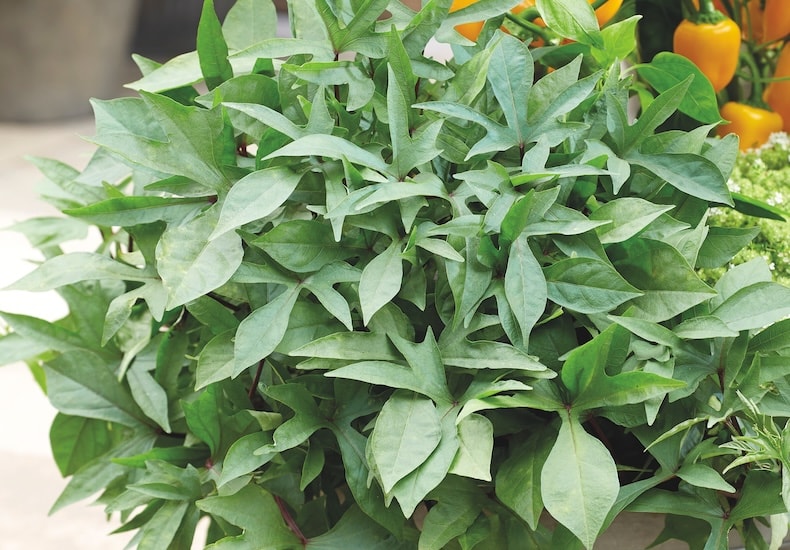
Sweet potatoes are delicious and ornamental
Image: Thompson & Morgan (©Jason Eagles/Visions BV, Netherlands)
Despite its name, the sweet potato is not a potato at all! This tasty root vegetable is a member of the Ipomoea family; the same genus as the popular flowering climber 'Morning Glory'. You’ll certainly notice the family resemblance from their pretty trumpet shaped flowers and vigorous spreading growth habit.
The skin and flesh of sweet potatoes range from bright orange through to deep purple, so they look spectacular on the plate. Better still, they're low in fat, containing only 86 kcal per 100g, and loaded with carotenoids, vitamin C, vitamin A, potassium, and fibre. The leaves and tips of young shoots can even be cooked as a spinach substitute. In fact, sweet potatoes are the healthy-eating superstars of the root vegetable world!
Which sweet potato should I grow?
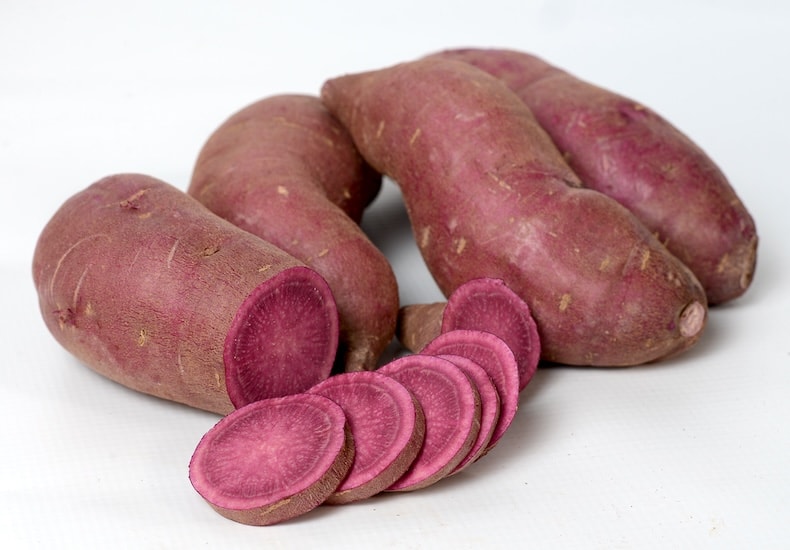
Grow 'Tahiti' for its attractive purple tubers
Image: Sweet potato 'Tahiti' from Thompson & Morgan
Most sweet potatoes are suitable for growing in the UK, although 'Beauregard Improved' is particularly reliable and produces good quality, flavoursome tubers.
The innovative ‘Treasure Island’ series is particularly suitable for use as ornamental edibles, so plant them up in patio containers and harvest some of the attractive leaves to steam while you wait for the crop to mature. Try ‘Tahiti’ for purple tubers or ‘Makatea’ for its pale creamy orange colour.
How to grow sweet potato slips
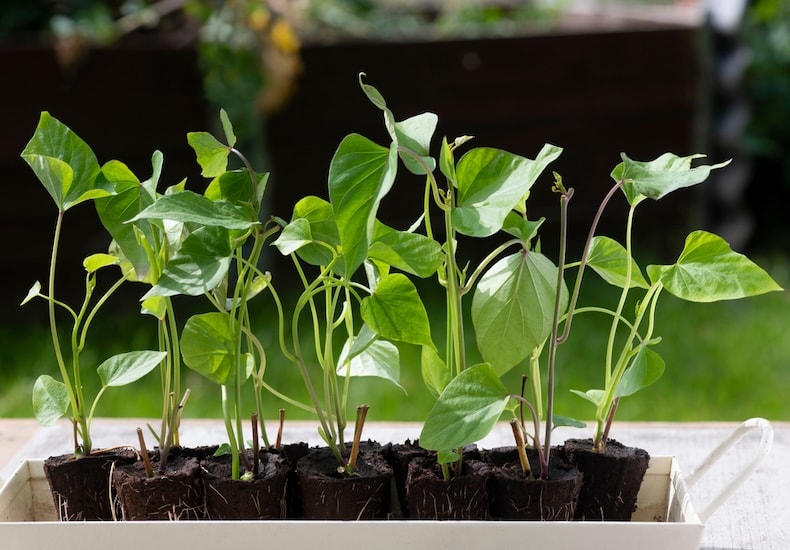
Grow on your sweet potato slips in a warm place
Image: Deborah Lee Rossiter/Shutterstock
Unlike normal potatoes, sweet potatoes are grown from 'slips'. These are the long shoots that have been removed from 'chitted' sweet potato tubers. 'Slips' don't have roots, although sometimes there are signs of small roots beginning to appear. The roots will grow once the 'slip' has been planted. Whilst it is possible to grow your own 'slips' from supermarket sweet potatoes, most supermarket varieties are not sufficiently hardy to grow well in the UK so crops are likely to be disappointing.
When they arrive, the 'slips' will look withered, but place them in a glass of water overnight and they’ll quickly recover. The next day you can plant them up individually into small pots of peat free multi-purpose compost. When planting sweet potato slips, it's important to cover the whole length of the stem, so that it’s covered right up to the base of the leaves.
Sweet potato plants aren’t hardy, so you’ll need to grow them on in a warm, frost free place for 3 weeks or more until they’re established. Warm, humid conditions will quickly encourage the slips to produce roots. Once they’re well grown, and all risk of frost has passed, gradually acclimatise your plants to outdoor conditions in a cold frame prior to transplanting them.
Where to plant sweet potatoes
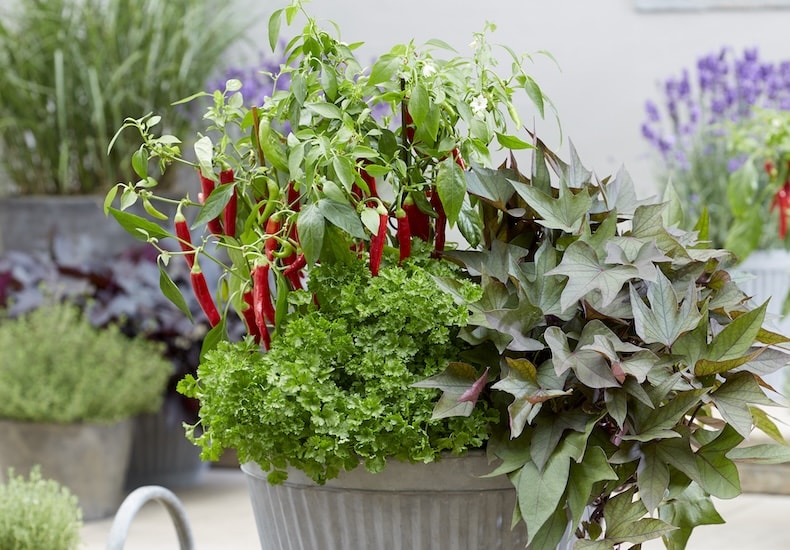
'Tatakoto' is pretty enough to planted alongside other ornamental edibles
Image: Thompson & Morgan (©Jason Eagles/Visions BV, Netherlands)
Sweet potatoes require high temperatures of 21-26C (70-78F), and their long stems need plenty of space as they have a vigorous growth habit. If you live in a cold area, they’re best planted in greenhouse borders, polytunnels or under cloches. In milder parts of the UK, they’re happy outdoors. Plant through a sheet of black polythene to warm the soil and suppress weed growth. If you cover them with fleece or plastic cloches, you'll be amazed at the difference this makes to the temperature.
Grow your sweet potatoes in full sun on fertile, well drained soil. They’re not particularly fussy but do prefer an acid or neutral soil. Plant them 30cm (12") apart, leaving 75cm (30") between each row. Where space is limited you can even plant sweet potatoes in containers or special potato growing bags.
How to care for sweet potatoes
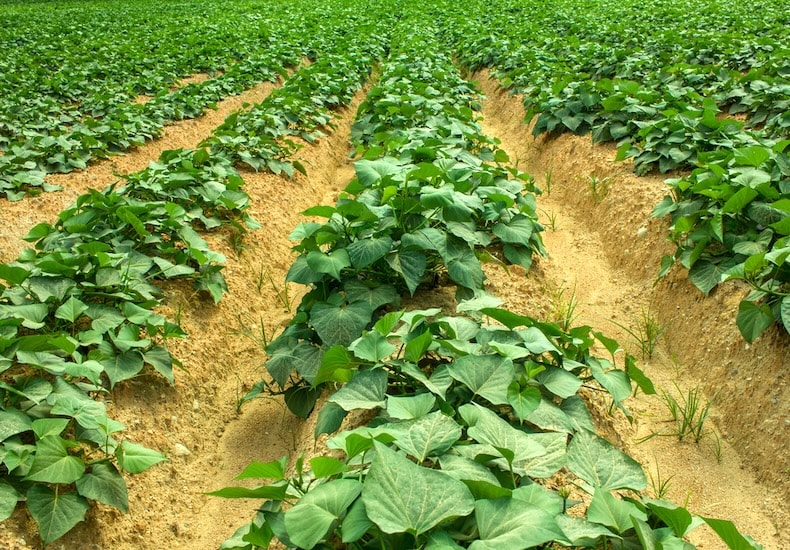
Pinch out sweet potato plants to keep them compact
Image: Pedarilhosbr/Shutterstock
Water your sweet potato plants regularly. If growing your crop undercover, remember to open the doors and windows during the day to keep your greenhouse or polytunnel well ventilated. Greenhouse and container crops will also appreciate a general purpose feed every two or three weeks.
Sweet potatoes have a vigorous growth habit and long sprawling stems. In the greenhouse, a plant support will keep sprawling stems tidy. Outdoors you can simply spread the stems out around the plant. Pinch out the growing points of stems that extend beyond 60cm to encourage more lateral stems to develop.
When should I harvest my sweet potatoes?
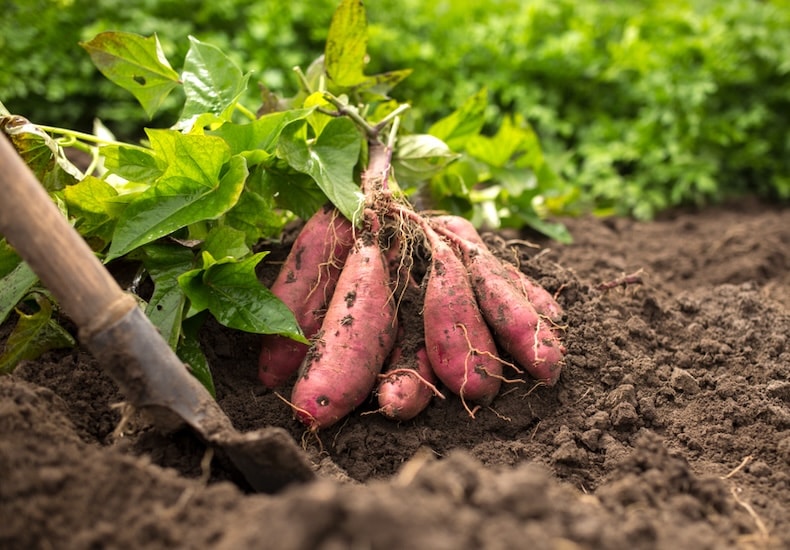
Lift your tubers carefully so as not to damage the tubers
Image: Sergiy Akhundov/Shutterstock
In late summer, approximately 12 to 16 weeks after planting, you’ll notice that the foliage and stems begin to turn yellow and die back. Now’s the time to start harvesting your sweet potatoes, although they can be left in the ground a little longer if you prefer larger tubers. Make sure that you lift them before the first frosts though, to avoid the tubers being damaged by the cold. Lift them with a fork, taking care not to bruise them.
How to store sweet potatoes
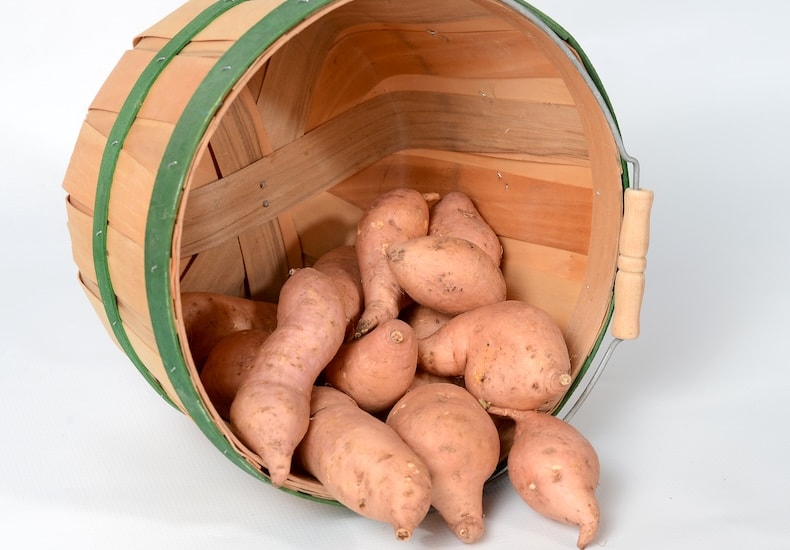
Store your sweet potatoes in a dry place
Image: Sweet potato 'Makatea' from Thompson & Morgan
Sweet potatoes can be used straight away, but they’ll also store well for several months if the skins are cured properly. Lay them out in the sun for a few hours immediately after harvesting and then move them to a warm humid place for 10 days; a greenhouse is ideal for this. Once the skins have cured, they can be stored in cooler conditions provided that they’re kept dry.
We hope this has given you all the information you need to grow your own colourful sweet potatoes. For more advice and guidance on growing potatoes, both sweet and traditional, head over to our hub page. And please share your harvests with us via our Facebook or Instagram pages using #yourtmgarden - we love to see your photos!
Sign Up For Exclusive Special Offers




© 2025 Thompson & Morgan. All rights reserved. A division of Branded Garden Products Limited.
Sign up for exclusive offers!



